
EN................................................................................................
1 - GENERAL INFORMATION
A) Users must read and perfectly understand the information provided by the
manufacturer (hereinafter ‘information) before using the device. Warning: this
information relates to the characteristics, services, assembly, disassembly,
maintenance, conservation, disinfection, etc. of the device. Although it does
include some suggestions on how to use the device, it must not be considered
a true to life instruction manual the same as an operating and maintenance
handbook for a car does not teach how to drive it and does not replace a driving
school). Warning: climbing rocks and ice, abseiling, via ferrata, speleology, alpine
skiing, canyoning, exploration, rescue work, tree climbing and works at height
are all activities with a high degree of risk, which may lead to accidents and even
death. The user takes complete responsibility for the risks deriving from these
activities and from using our device.
This device must be used only by individuals medically t that have been trained
(and educated) in its use, or under the direct control of instructors/supervisors
who can guarantee their safety.
B) Before and after using the device, the user must perform all the inspections
described in the specic information and, in particular, must make sure that the
device is:
- in perfect condition and working well,
- suitable for use: only the techniques that are not crossed out are permitted, any
other use is considered improper and therefore potentially dangerous.
C) If the user has the slightest doubt concerning the efciency of the device, it must
be replaced immediately, particularly after having used it to stop a fall. Improper
use, deformation, falls, wear, chemical contamination, exposure to temperatures
below -30°C or higher than +50°C for the textile/plastic components/devices, and
+100°C for metal devices, are some examples of other causes that may reduce,
limit or end the life of the device. We strongly suggest using the device personally
in order to continuously monitor the degree of protection and efciency.
D) This device can be used combined with personal protective equipment that
conforms to Directive 89/686/EEC when compatible with the relevant information
from the manufacturer.
E) The anchoring position is essential for safely stopping a fall: carefully assess
the free height under the user (clearance), height of a potential fall, rope paid out,
the stretch in any energy dissipaters or absorbers, the height of the user and the
“pendulum” effect in order to avoid all possible problems (e.g. ground, material
rubbing against the rock face, abrasions, etc..).
F) Minimum resistance of anchoring points, on both natural and articial elements,
must be at least 12 kN. The assessment of those made on natural elements (rocks,
plants, etc.) is possible only empirically, and must therefore be performed by a
competent expert, while those on articial elements (metal, concrete, etc.) can be
calculated scientically, and must therefore be performed by qualied personnel.
G) It is strictly forbidden to modify and/or repair the device.
H)Avoid exposing the device to heat sources or to contact with chemical
substances. Reduce direct exposure to the sunlight to a minimum, particularly for
textile and plastic devices.
At low temperatures and in the presence of moisture can form ice that, on textile
devices, can reduce exibility and increase the risk of cutting and abrasion.
I) Make sure that the device has been supplied complete, in its original packaging
and with the manufacturer’s information. It is compulsory for dealers selling
products in countries other than the original destination to check and supply the
translation of this information.
L) All our devices are tested/inspected piece by piece in accordance with the
procedures of the Quality System certied according to the UNI EN ISO 9001
standard. Our personal protective equipment is certied by the accredited
authority indicated in the device’s specic instructions and, if they belong to
category III, are also subjected to production surveillance - in compliance with
article 11/B of Directive 89/686/CEE - by an authority whose accreditation number
is indicated on the device.
Warning: laboratory tests, inspections, information and norms do not
always manage to reproduce what actually happens in practice, and so
performance under real usage conditions in a natural environment can
differ, sometimes even considerably. The best information can be gained
by continual practice under the supervision of skilled, expert, qualied
individuals.
2 – MAINTENANCE AND STORAGE
Device maintenance consists of:
- Frequent washing in warm drinking water (30°C), possibly with the addition of
neutral detergent. Rinse and, without spinning, leave it to dry without leaving it
in the direct sunlight.
- Lubricate moving parts (only for metal devices) with silicon-based oil. This
operation is to be performed once the device has dried out, being careful to
avoid contact with textile components.
In addition, if necessary:
- disinfect the device, soaking it in warm water containing 1% of sodium
hypochlorite (bleach). Rinse with drinking water and, without spinning, leave it
to dry without leaving it in the direct sunlight. Avoid sterilising textile devices in
an autoclave.
Storage: store the devices in a dry (40-90% relative humidity), fresh (temperature
5-30°C) and dark place, chemically neutral (absolutely avoid salty and/or acid
environments), away from sharp edges, corrosive substances or other possible
detrimental conditions.
3 – CHECKS AND INSPECTIONS
We would strongly advise having pre and post use controls carried out by qualied
individuals, as indicated in the instructions for the specic device.
Except in the case of more stringent legal requirements, category III devices must
be inspected annually and the inspections must be performed by a competent
person that has been trained and authorised by the manufacturer. The outcome
of these periodic inspections must be recorded on the device’s inspection chart
or a designated register.
4 – DEVICE LIFE
Read point 1C very carefully. The lifespan of metal devices is impossible to
determine, theoretically unlimited, while textile, synthetic and plastic devices can
last 10 years from the date of production (indicated in the serial number) as long as:
maintenance and storage are carried out as described in point 3, the results of pre-use,
post-use and periodic inspections are all positive, and the device is used correctly, not
exceeding 1/4 of the indicated load.
Any devices that do not pass the pre-use, post-use and periodic inspections must be
discarded.
5 – LEGAL OBLIGATIONS
Professional and recreational activities are often regulated by specic national laws
that may impose specic limits and/or requirements for the use of PPE and the
preparation of safety systems, which included the PPE in their components. The user
is obliged to know and apply these laws, which may in some cases impose obligations
different from those contained in this information.
6 – GUARANTEE
The manufacturer guarantees that the device complies with regulations in force at
the time of production. The guarantee covering faults is limited to production defects
and raw materials. It does not include wear and tear, oxidation, damages caused
by improper use and/or during competition, incorrect maintenance, transport,
conservation, storage, etc. The guarantee becomes void as soon as the device is
modied or tampered with. The validity corresponds to the legal guarantee of the
country where the device was sold by the manufacturer, with effect from the date of
sale. After this period no claim can be made against the manufacturer. Any request
for repair or replacement under this warranty must be accompanied by a proof of
purchase. If the defect is accepted, the manufacturer, at its sole discretion, will repair,
replace or refund the device. Under no circumstances does the manufacturer’s liability
extend beyond the invoice price of the device.
7 - SPECIFIC INFORMATION
The Personal Protective Equipment Category III Elastic Tether Evo (g. 1) is a safe-
ty line, certied according to EN ISO 12401:2009 standard, designed to provide a
connection between anchor point xed on the boat and a deck safety harness, and
intended to prevent the user from falling overboard.
Fig. 1A – 234.E01 Elastic Tether Evo Single: elastic single arm safety line.
Fig. 1B – 233.E01 Elastic Tether Evo Double: elastic double arms safety line.
Warning this safety line:
-does not provide protection against fall from a height,
-shall not be used with dinghy harness, surng harness, safety harness for fast
motor boat, full body harness, and purposes different from that specied,
-it can transmit very large forces to the anchor point, attach only to strong an-
chor points or ropes.
Fig. 2 – Nomenclature of parts: (A) Lanyard of polyamide, (B) Connector/s of alumini-
um alloy “Double Gate”, (C) Connector of stainless steel “Express”, (D) Load indicator.
Example of correct connection between the anchor point x to the boat and deck safety
harness with the safety line Fig. 3.
Important: the unstitching of the load indicator (D) means that the safety line has been
loaded with a force of approx. 4 kN. (g. 4), in such event replace the safety line.
7.1 - Device carriage
While transporting the device adopt storage precautions (point 2) and avoid exposition
to direct sunlight and humidity.
8 – PRE AND POST USE CONTROLS
Before and after use make sure that the device is in efcient condition and working
properly, particularly check:
- textile parts do not show any signs of tear, burns, chemical residues, excessive uff,
wear. Pay special attention to the areas that contact metal parts (buckles, rings, etc.),
- stitchings are undamaged and that there are no cut or loosen threads,
- the load indicator (D) is unbroken,
- connectors (B and C) have not suffered from mechanical deformations, do not show
signs of cracks or wear and that the connector gates open completely when pushed,
closes automatically and completely when released, and the gates locking devices
work as described in g. 5,
- markings, labels included, are still readable.
9 – CERTIFICATION
This device is certied by notied body n° 2008 – DOLOMITICERT scarl - Zona Indus-
triale Villanova - 30013 Longarone BL – Italy.
Master text: ITALIAN
IT.......................................................................................................
1 - INFORMAZIONI GENERALI
A) Le informazioni fornite dal fabbricante (di seguito informazioni) devono essere
lette e ben comprese dall’utilizzatore prima dell’impiego del dispositivo. Attenzione:
le informazioni riguardano la descrizione delle caratteristiche, delle prestazioni,
del montaggio, dello smontaggio, della manutenzione, della conservazione, della
disinfezione, ecc. del dispositivo, anche se contengono alcuni suggerimenti di impiego
non devono essere considerate un manuale d’uso nelle situazioni reali (cosi come
un libretto d’uso e manutenzione di un’autovettura non insegna a guidare e non si
sostituisce ad una scuola guida). Attenzione: l’arrampicata su roccia e ghiaccio, le
discese, la via ferrata, la speleologia, lo sci-alpinismo, il torrentismo, l’esplorazione, il
soccorso, l’arborismo e i lavori in quota sono tutte attività ad alto rischio che possono
comportare incidenti anche mortali. L’utilizzatore si assume tutti i rischi derivanti dalla
pratica di tali attività e dall’uso di ogni nostro dispositivo.
Questo dispositivo deve essere utilizzato solo da persone sicamente idonee, formate
(informate e addestrate) all’uso o sottoposte al controllo diretto di formatori/supervisori
che ne garantiscono la sicurezza.
B)Prima e dopo l’uso l’utilizzatore deve effettuare tutti i controlli descritti nelle
informazioni speciche ed in particolare assicurarsi che il dispositivo sia:
- in condizioni ottimali e che funzioni correttamente,
- idoneo all’utilizzo: sono consentite solo le tecniche rafgurate senza sbarratura, ogni
altro utilizzo è considerato non conforme e quindi potenzialmente pericoloso.
C) Se l’utilizzatore ha il minimo dubbio sull’efcienza del dispositivo, lo deve sostituire
immediatamente, in particolare dopo averlo utilizzato per arrestare una caduta.
L’uso non conforme, le deformazioni, le cadute, l’usura, la contaminazione chimica,
l’esposizione a temperature inferiori a -30°C o superiori a +50°C per i componenti/
dispositivi tessili/plastici, e +100°C per i dispositivi metallici, sono alcuni esempi di altre
cause che possono ridurre, limitare e terminare la vita del dispositivo. E’ vivamente
consigliato l’uso personale del dispositivo per mantenere continuamente monitorati il
grado di protezione e di efcienza.
D) Questo dispositivo può essere usato in abbinamento a DPI conformi alla Direttiva
89/686/CEE quando compatibile con le relative informazioni del fabbricante.
E)La posizione dell’ancoraggio è fondamentale per la sicurezza dell’arresto della
caduta: valutare attentamente l’altezza libera presente sotto l’utilizzatore, l’altezza di
una potenziale caduta, l’allungamento della corda/fune, l’allungamento di un eventuale
assorbitore/dissipatore di energia, la statura dell’utilizzatore e l’effetto “pendolo”in
modo da evitare ogni possibile ostacolo (es. il terreno, lo sfregamento, le abrasioni,
ecc.).
F) La resistenza minima dei punti di ancoraggio, realizzati sia su elementi naturali che
articiali, deve essere di almeno 12 kN. La valutazione di quelli realizzati su elementi
naturali (roccia, vegetali, ecc.) è possibile solo in modo empirico, per cui deve essere
effettuata da persona esperta e competente, mentre per quelli realizzati su elementi
articiali (metalli, calcestruzzo, ecc.) è possibile in modo scientico, pertanto deve
essere effettuata da persona qualicata.
G) E’ assolutamente vietato modicare e/o riparare il dispositivo.
H) Evitare l’esposizione del dispositivo a fonti di calore e al contatto con sostanze
chimiche. Ridurre al necessario l’esposizione diretta al sole, in particolare per i
dispositivi tessili e plastici. A temperature basse e in presenza di umidità può formarsi
del ghiaccio che, sui dispositivi tessili, può ridurre la essibilità e aumentare il rischio
di taglio e abrasione.
I) Vericare che il dispositivo sia stato fornito integro, nella confezione originale e con
le relative informazioni del fabbricante. Per i dispositivi venduti in paesi diversi dalla
destinazione di origine, il rivenditore ha l’obbligo di vericare e di fornire la traduzione
di queste informazioni.
L) Tutti i nostri dispositivi sono collaudati/controllati pezzo per pezzo in accordo alle
procedure del Sistema Qualità certicato secondo la norma UNI EN ISO 9001. I
dispositivi di protezione individuale sono certicati dall’organismo accreditato riportato
nelle istruzioni speciche del dispositivo e, se di III categoria, sottoposti anche alla
sorveglianza di produzione, in accordo all’articolo 11/B della Direttiva 89/686/CEE, da
parte dall’organismo il cui numero di accreditamento è marcato sul dispositivo.
Attenzione: i test di laboratorio, i collaudi, le informazioni e le norme non sempre
riescono a riprodurre la pratica, per cui i risultati ottenuti nelle reali condizioni
d’utilizzo del dispositivo nell’ambiente naturale possono differire in maniera
talvolta anche rilevante. Le migliori informazioni sono la continua pratica d’uso
sotto la supervisione di persone competenti/esperte/qualicate.
2 – MANUTENZIONE E IMMAGAZZINAMENTO
La manutenzione di questo dispositivo prevede:
- il lavaggio frequente con acqua potabile tiepida (30° C), eventualmente con l’aggiunta
di un detergente neutro. Sciacquare e, senza centrifugare, lasciare asciugare
evitando l’esposizione diretta al sole,
- la lubricazione delle parti mobili (solo per i dispositivi metallici) con olio a base di
silicone. Operazione da effettuare dopo l’asciugatura del dispositivo ed evitando il
contatto con le parti tessili,
inoltre, se necessario:
- disinfettare, immergendo il dispositivo per un’ora in acqua tiepida con diluito, nella
misura dell’ 1%, ipoclorito di sodio (candeggina). Sciacquare con acqua potabile, e,
senza centrifugare, lasciare asciugare evitando l’esposizione diretta al sole. Evitare
la sterilizzazione in autoclave dei dispositivi tessili.
Immagazzinamento: depositare i dispositivi in un luogo asciutto (umidità relativa 40-
90%), fresco (temperatura 5-30° C) e buio, chimicamente neutro (evitare assolutamente
ambienti salini e/o acidi), lontano da spigoli taglienti, sostanze corrosive o altre possibili
condizioni pregiudizievoli.
3 – CONTROLLI E ISPEZIONI
Raccomandiamo vivamente di effettuare i controlli pre-uso e post-uso, riportati nelle
istruzioni speciche del dispositivo. Salvo disposizioni di legge più restrittive, le
ispezioni dei dispositivi di III categoria hanno periodicità annuale e devono essere
effettuate da persona competente, quindi formata e autorizzata dal fabbricante. Gli
esiti delle ispezioni periodiche devono essere registrate sulla scheda di ispezione del
dispositivo o su apposito registro.
4 – DURATA DEL DISPOSITIVO
Leggere attentamente il punto 1C. La durata di vita dei dispositivi metallici è
indeterminabile, teoricamente illimitata, mentre per quelli in materiale tessile, sintetico
e plastico è di 10 anni dall’anno di produzione (riportato nel serial number) a condizione
che: la manutenzione e l’immagazzinamento siano effettuati come descritto al punto
3, gli esiti dei controlli pre-uso, post-uso e le ispezioni periodiche siano positivi e
che il dispositivo sia utilizzato correttamente non eccedendo ¼ del carico marcato. I
dispositivi che non hanno superato i controlli pre-uso, post-uso o le ispezioni periodiche
devono essere alienati.
5 – OBBLIGHI DI LEGGE
Le attività professionali e del tempo libero sono sovente regolate da apposite leggi
nazionali che possono imporre limiti e/o obblighi all’utilizzo dei DPI e all’approntamento
dei sistemi di sicurezza, di cui i DPI sono componenti. E’ obbligo dell’utilizzatore
conoscere ed applicare tali leggi che potrebbero prevedere limiti differenti da quanto
riportato in queste informazioni.
6 – GARANZIA
Il fabbricante garantisce la conformità del dispositivo alle norme vigenti al momento
della produzione. La garanzia per vizi è limitata ai difetti delle materie prime e di
fabbricazione, non comprende la normale usura, l’ossidazione, i danni provocati
da uso non conforme e/o in competizioni, da non corretta manutenzione, trasporto,
conservazione o immagazzinamento, ecc. La garanzia decade immediatamente
nel caso vengano apportate modiche o manomissioni al dispositivo. La validità
corrisponde alla garanzia legale del paese in cui è stato venduto il dispositivo, a
decorrere dalla data di vendita, da parte del fabbricante. Decorso tale termine nessuna
pretesa potrà essere avanzata nei confronti del fabbricante. Qualsiasi richiesta di
riparazione o sostituzione in garanzia dovrà essere accompagnata da una prova
di acquisto. Se il difetto è riconosciuto, il fabbricante si impegna a riparare o, a sua
discrezione, a sostituire o rimborsare il dispositivo. In nessun caso la responsabilità del
fabbricante si estende oltre il prezzo di fattura del dispositivo.
7 – INFORMAZIONI SPECIFICHE
Il Dispositivo di Protezione Individuale di III categoria Elastic Tether Evo (g. 1) è un
nastro di sicurezza certicato in accordo allo standard EN ISO 12401:2009, adatto a
collegare il punto di ssaggio posto sull’imbracatura di sicurezza da ponte ed un saldo
punto di ssaggio all’imbarcazione, con lo scopo di evitare che l’utilizzatore cada
fuori bordo.
Fig. 1A – 234.E01 Elastic Tether Evo Single: nastro di sicurezza elastico a braccio
singolo.
Fig. 1B – 233.E01 Elastic Tether Evo Double: nastro di sicurezza elastico a due
braccia.
Attenzione, questo dispositivo:
- non fornisce protezione contro la caduta dall’alto,
- non deve essere utilizzato con imbracature da “trapezio” per dinghy, im-
bracature per surng, cinture di sicurezza per imbarcazioni a motore veloci,
imbracature destinate a proteggere contro cadute dall’alto e per scopi diver-
si da quello specicato,
- può trasmettere forze molto elevate, collegare solo a punti o cime di s-
saggio molto resistenti.
Fig. 2 - Terminologia delle parti: (A) Fettuccia in poliammide, (B) Connettore in
alluminio “Double Gate”, (C) Connettore in acciaio inossidabile “Express”, (D) In-
dicatore di carico.
Esempio di corretto collegamento tra il punto di ssaggio dell’imbarcazione e l’im-
bracatura di sicurezza da ponte mediante il nastro di sicurezza (g. 3).
Importante: La rottura delle cuciture dell’indicatore di carico (D) segnala che il
nastro di sicurezza è stato sollecitato con una forza di circa 4 kN (g. 4), in tal
caso è necessario sostituirlo.
7.1 – Trasporto del dispositivo
Durante il trasporto del dispositivo adottare le precauzioni per l’immagazzinamen-
to (punto 2) ed evitare l’esposizione diretta alla luce del sole e l’umidità.
8 - CONTROLLI PRE E POST USO
Prima e dopo l’uso assicurarsi che il dispositivo sia in condizioni efcienti e funzio-
ni correttamente, in particolare controllare che:
- le parti tessili non presentino tagli, bruciature, residui di prodotti chimici, ecces-
siva peluria, usura, vericare le zone in contatto con componenti metallici (bbie,
anelli, ecc.),
- le cuciture siano integre e che non vi siano li tagliati o allentati,
- l’indicatore di carico (D) sia integro,
- i connettori (B e C) non abbiano subìto deformazioni meccaniche e non presen-
tino segni di cricche o di usura, la leva, quando azionata, si apra completamente
e che, quando rilasciata, si richiuda automaticamente e completamente, e i dispo-
sitivi di bloccaggio delle leve funzionino come descritto in g. 5,
- le marcature, comprese le etichette, siano leggibili.
9 – CERTIFICAZIONE
Questo dispositivo è stato certicato dall’organismo accreditato n° 2008 – DO-
LOMITICERT scarl - Zona Industriale Villanova - 30013 Longarone BL – Italia.
ZZV05806 rev.0
ELASTIC TETHER EVO
KONG s.p.a.
Via XXV Aprile, 4 - (zona industriale)
I - 23804 MONTE MARENZO (LC) - ITALY
Tel +39 0341630506 - Fax +39 0341641550 - [email protected]
234.E01 • 233.E01
Stáhněte si překlad ve vašem jazyce - Laden Sie die
Übersetzung in Ihrer Sprache herunter - Download the
translation in your language - Bájate la traducción en tu
idioma - Télécharger la traduction dans vostre langue
- Scarica la traduzione nella tua lingua - Download de
vertaling in je eigen taal - Pobierz tłumaczenie w twoim
języku - Faça o download da tradução no seu idioma -
Скачайте перевод на ваш язык - 下载您的语言的译文

LEGENDA K PIKTOGRAMŮM - LEGENDE DER PIKTOGRAMME - ICON LEGEND - LEYENDA DE
LOS PICTOGRAMAS - LÉGENDE DES PICTOGRAMMES - LEGENDA DEI PITTOGRAMMI - LEGENDA
VAN DE PICTOGRAMMEN - OPIS PIKTOGRAMÓW - LEGENDA DOS PICTOGRAMAS - УСЛОВНЫЕ
ОБОЗНАЧЕНИЯ НА ЗНАЧКАХ - 象形符号图例
Správné použití - Korrekte verwendung - Correct use - Uso correcto - Emploi correct - Uso
corretto - Correct gebruk - Zastosowanie dozwolone - Uso correto - Правильное применение
- 正确使用
Nesprávné použití - Falsche verwendng - Incorrect use - Uso no correcto - Emploi non correct -
Uso non corretto - Verkeerd gebruik - Zastosowanie niedozwolone - Uso não correto -
Неправильное применение -
错误使用
Nebezpečí! - Gefährlich! - Dangerous! - ¡peligroso! - Dangereux ! - Pericoloso! - Gevaarlijk! -
Niebezpieczny! - Perigoso! - Опасно! - 危险!
Smrtelné nebezpečí! - Lebensgefahr! - Death risk! - ¡peligro de muerte! - Danger de mort ! -
Pericolo di morte! - Doodsgevaar! - Niebezpieczeństwo śmierci! - Perigo de morte! -
Смертельная опасность! - 死亡危险!
Kotvicí bod - Anschlagpunkt - Anchoring point - Punto de anclaje - Point d’ancrage - Punto di
ancoraggio - Ankerpunt - Punkt zaczepowy - Ponto de ancoragem - Страховочная точка - 固
定点
LLLLLL YY XXXX
VÝROBNÍ ČÍSLO - SERIENNUMMER - SERIAL NUMBER -
NÚMERO DE SERIE - NUMÉRO DE SÉRIE - NUMERO DI SERIE
- SERIENUMMER - NUMER SERYJNY - NÚMERO DE SÉRIE -
СЕРИЙНЫЙ НОМЕР - 序列号
LLLLLL
Výrobní šarže - Produktionscharge - Production lot - Lote de
producción - Lot de production - Lotto di produzione - Productiepartij
- Partia produkcyjna - Lote de fabrico - Производственная партия
- 生产批号
YY
Rok výroby - Produktionsjahr - Year of production - Año de producción -
Année de production - Anno di produzione - Productiejaar - Rok produkcji -
Ano de fabrico - Год выпуска - 生产年份
XXXX
Pořadové číslo - Laufende nummer - Progressive number - Número
progresivo - Numéro progressif - Numero progressivo - Progressief
nummer - Kolejny numer - Número progressivo - Порядковый номер
- 序列编号
1
2 3
4 5
6 7
8 9 10 11
INSPEKČNÍ LIST - PRÜFDATENBLATT - INSPECTION CHART - FICHA DE INSPECCIÓN - FICHE
D’INSPECTION - SCHEDA DI ISPEZIONE - INSPECTIEKAART - KARTA PRZEGLĄDÓW - FICHA
DE INSPEÇÃO - КОНТРОЛЬНАЯ КАРТА - 检验表
1Artikl - Artikel - Article - Artículo - Article - Articolo - Artikel - Artykuł - Artigo - Артикул - 产品
2Rok výroby - Produktionsjahr - Year of manufacture - Año de fabricación - Année de fabrication
- Anno di fabbricazione - Bouwjaar - Rok produkcji - Ano de fabrico - Год выпуска - 制造年份
3Výrobní číslo - Seriennummer - Serial number - Número de serie - Numéro de série - Numero di serie -
Serienummer - Numer seryjny - Número de série - Серийный номер - 序列号
4
Datum zakoupení - Kaufdatum - Date of purchase - Fecha de compra - Date d’achat - Data
di acquisto -
Aankoopdatum - Data zakupu - Data de compra - Дата приобретения - 购买日期
5
Místo zakoupení - Kaufort - Place of purchase - Lugar de compra - Lieu d’achat - Luogo di
acquisto -
Aankoopadres - Miejsce zakupu - Local de compra - Место приобретения - 购买地点
6
Datum prvního použití - Datum der erstverwendung - Date of rst use - Fecha del primer uso
- Date de premier emploi - Data di primo utilizzo - Datum eerste gebruik - Data pierwszego
użycia - Data da primeira utilização - Дата первого применения - 初次使用日期
INSPEKČNÍ LIST - PRÜFDATENBLATT - INSPECTION CHART - FICHA DE INSPECCIÓN - FICHE
D’INSPECTION - SCHEDA DI ISPEZIONE - INSPECTIEKAART - KARTA PRZEGLĄDÓW - FICHA
DE INSPEÇÃO - КОНТРОЛЬНАЯ КАРТА - 检验表
7
Jméno uživatele - Name des anwenders - Name of user - Nombre del usuario - Nom de l’utilisateur -
Nome dell’utilizzatore - Naam gebruiker - Nazwa
użytkownika - Nome do utilizador - Имя пользователя -
使用者名字
8
Datum inspekce - Datum der überprüfung - Date of inspection -
Fecha de la inspección - Date de l’inspection - Data dell’ispezione -
Inspectiedatum - Data przeglądu - Data da inspeção - Дата контроля -
检验日期
9
Výsledek inspekce - Ergebnis der überprüfung - Result of inspection - Resultado de la inspección -
Résultat de l’inspection - Risultato dell’ispezione - Inspectieresultaat - Wynik przeglądu -
Resultado da inspeção - Результат контроля - 检验结果
Vyhovuje - Willigt - Conforms - Es conforme - Conforme - Conforme - Complies - Zgodne -
Em conformidade - Соответствует требованиям - 符合规定
Není kompatibilní - Nicht konform - Non-compliant - No conformes - Non conforme - Non conforme -
Niet conform - Nie spełnie - Não compatível - не соответствующего - 不符合
10 Komentář - Kommentare - Comments - Comentarios - Commentaires - Commenti - Commentaar -
Komentarz - Comentários - Комментарии - 评论
11 Podpis - Unterschrift - Signature - Firma - Signature - Firma - Handtekening - Podpis - Assinatura -
Подпись - 签名
1A 1B
2
3 4
5
F < 4 kN
F > 4 kN
EXPRESS
DOUBLE GA
TE
1
2
CB
A
D
C
B
A
DD
# 234.E01
ELASTIC TETHER EVO
SINGLE
# 233.E01
ELASTIC TETHER EVO
DOUBLE
D
D
234.E01
233.E01
ELASTIC TETHER
EVO SINGLE
ELASTIC TETHER
EVO DOUBLE
OZNAČENÍ - MARKIERUNG - MARKING - MARCA - MARQUAGE - MARCATURA -
MARKERING - MARCAÇÕES - МАРКИРОВКА - 㪖帿
Model - Modell - Model - Modelo - Modèle
Modello - Model - Modelo - Модель - 伊⨚
Jméno výrobku - Handelsname - Trade name - Nombre comercial
Nom de marque - Nome commerciale - Handelsnaam
Nome comercial - торговое наименование - ⟕❐⚜
Pokaždé si přečtěte návod a postupujte dle pokynů dodaných výrobcem
Immer die vom Hersteller gelieferten Informationen lesen und befolgen
Always read and follow the information supplied by the manufacturer
Lea siempre y siga la información facilitada por el fabricante
Lire et suivre toujours les informations données par le fabricant
Leggere sempre e seguire le informazioni fornite dal fabbricante
Lees altijd de informatie van de fabrikant
Leia e cumpra sempre as informações fornecidas pelo fabricante
Всегда прочитывать и соблюдать информацию, предоставленную изготовителем
㉔檗桀₵䏶抯㙟∪䤓㋾
Dodržiavanie smernice 89/686/EHS - Die Einhaltung der Richtlinie 89/686/EWG -
Conformity to Directive 89/686/EEC - El cumplimiento de la Directiva 89/686/CEE del
Consejo - Conforme à la Directive 89/686/CEE - Conformità alla Direttiva 89/686/CEE -
Naleving van Richtlijn 89/686/EEG van de Raad - Conformidade com a Directiva
89/686/CEE - Соответствует Директиве 89/686/CEE - 89/686/EEC
Instituce akreditovaná pro dohled nad výrobou:
Benannte Stelle für die Überwachung der Herstellung:
Notified body for production inspection :
Organismo acreditado para la supervisión de la producción :
Organisme accrédité à l’inspection de la production :
Organismo accreditato alla sorveglianza di produzione:
Aangemelde instantie voor fabricagecontrole:
Organismo certificado para controlo da produção:
Организм, аккредитованный на контроль производства:
㖖䤓ℶ❐㭏洛
ITALCERT Viale Sarca, 336 - 20126 Milano – Italia
0426
Odpovídá evropské normě - Entspricht der Europäischen Norm - Conformity to
European Norm - Cumple con la norma europea - Conforme à la norme européenne -
Conformità alla Norma Europea - Voldoet aan de Europese norm - Em conformidade
com a norma europeia - Соответствие Европейскому стандарту - 䶵⚗㶶㿁㪖
EN ISO 12401:09
Měsíc/rok výroby - Monat/produktionsjahr - Month/year of production
- Mes/año de producción - Mois/année de production - Mese/anno di produzione
- Maand/productiejaar - Miesiąc/rok produkcji -
Mês/ano de fabrico - месяц / Год выпуска - /
MM/YYYY
Život datum mez - Lebensdauer - Life limit date - Fecha límite de vida - Date limite de vie
- Data di scadenza - Life limiet datum - Data limite de vida - Срок жизни -
MM/KKKK
Part Number - Teilenummer - Part Number - Número de pieza - Numéro d'article
- Numero di parte - Onderdeel nummer - Número da peça - номер части - 榅ↅ壮
P/N............
-
 1
1
-
 2
2
Kong Elastic Tether Evo Double Manuale utente
- Tipo
- Manuale utente
- Questo manuale è adatto anche per
in altre lingue
Documenti correlati
-
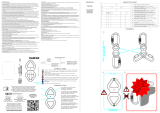 Kong Dancer Manuale utente
Kong Dancer Manuale utente
-
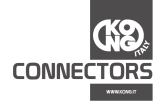 Kong i-Ovalone DNA Twistlock Manuale utente
Kong i-Ovalone DNA Twistlock Manuale utente
-
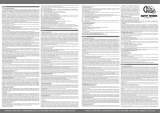 Kong Elastic Tether Single Manuale utente
Kong Elastic Tether Single Manuale utente
-
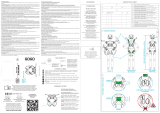 Kong Gogo Manuale utente
Kong Gogo Manuale utente
-
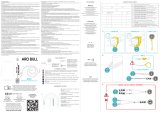 Kong Aro Bull Manuale utente
Kong Aro Bull Manuale utente
-
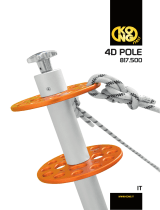 Kong 4D POLE Manuale utente
Kong 4D POLE Manuale utente
-
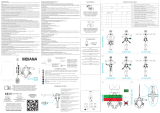 Kong Indiana Manuale utente
Kong Indiana Manuale utente
-
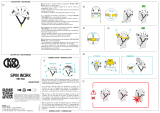 Kong Spin Manuale utente
Kong Spin Manuale utente
-
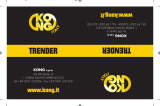 Kong Trender Manuale utente
Kong Trender Manuale utente
-
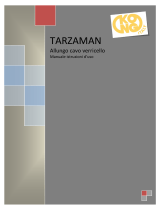 Kong TARZAMAN 1 (AW139) Manuale utente
Kong TARZAMAN 1 (AW139) Manuale utente











